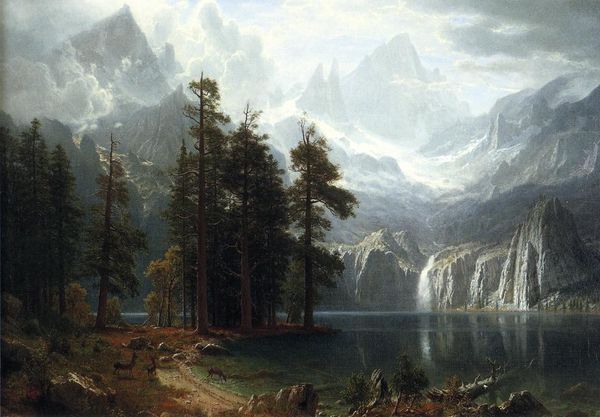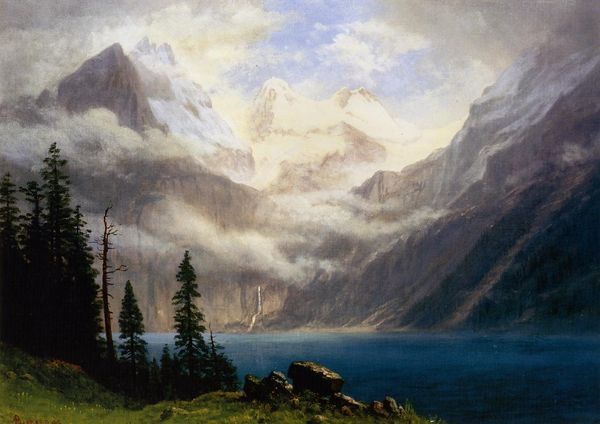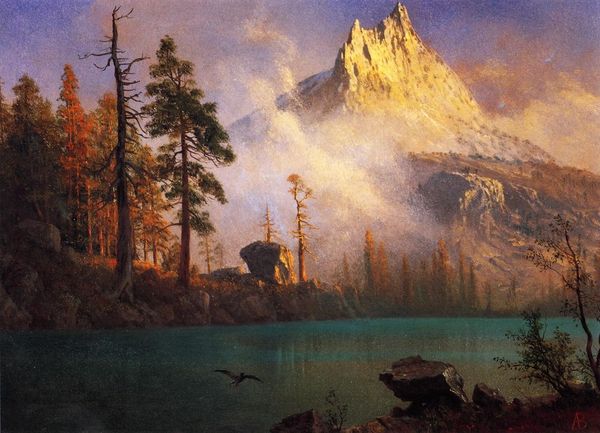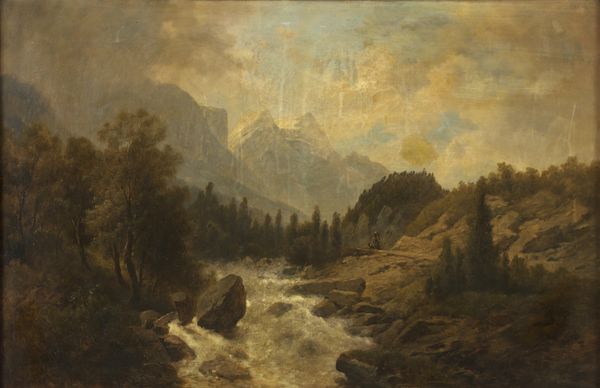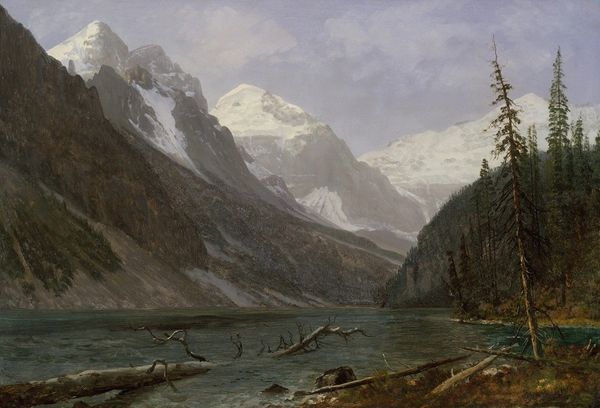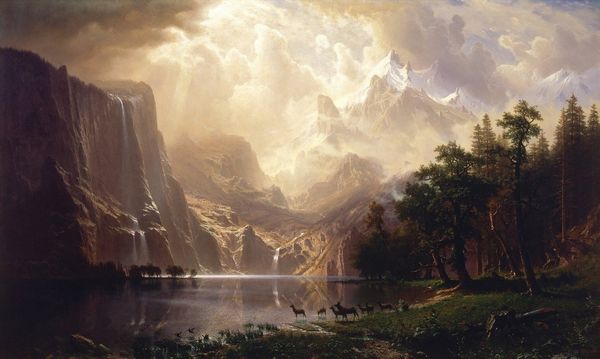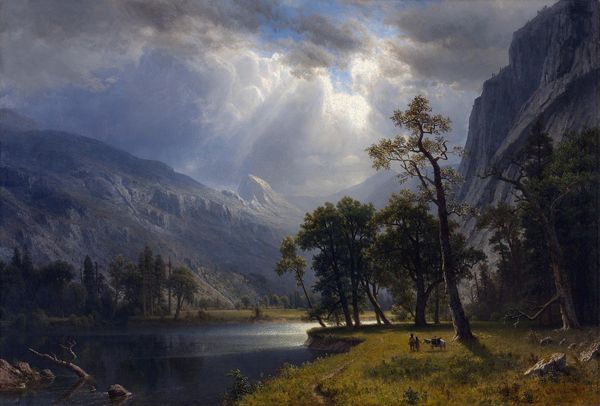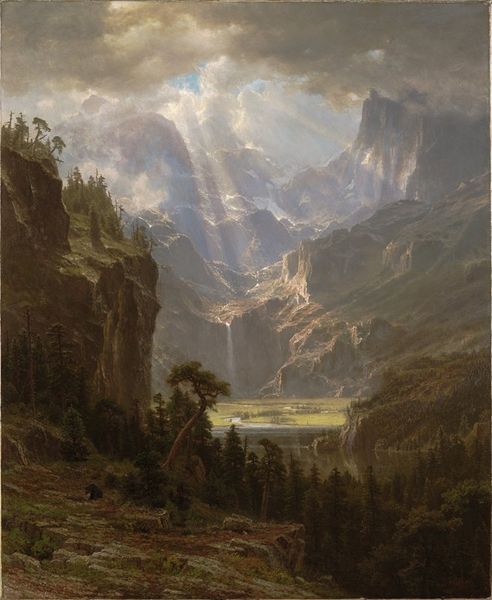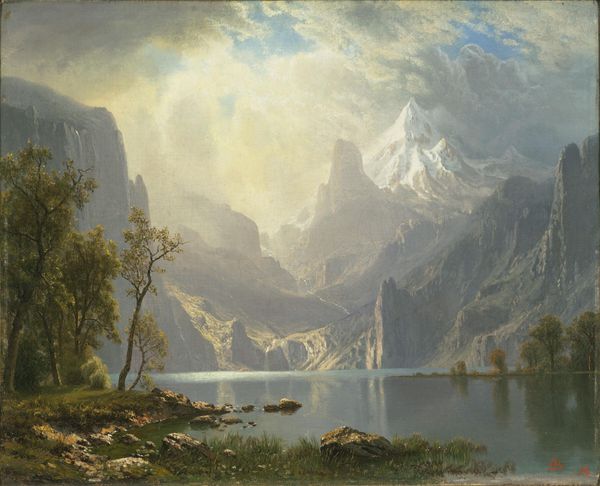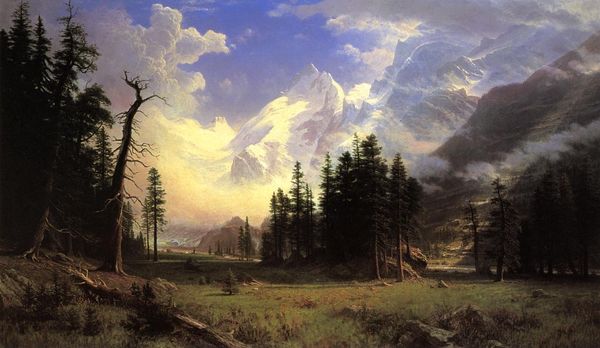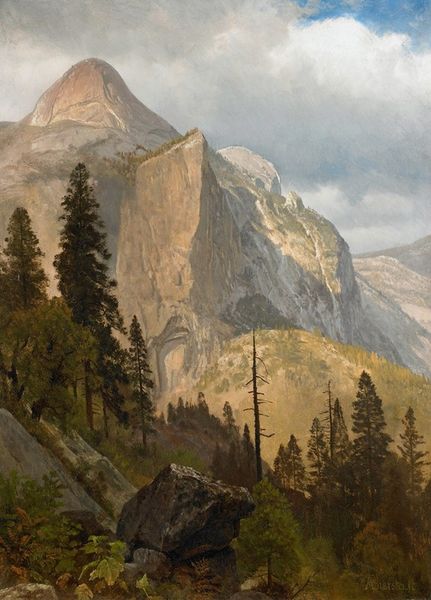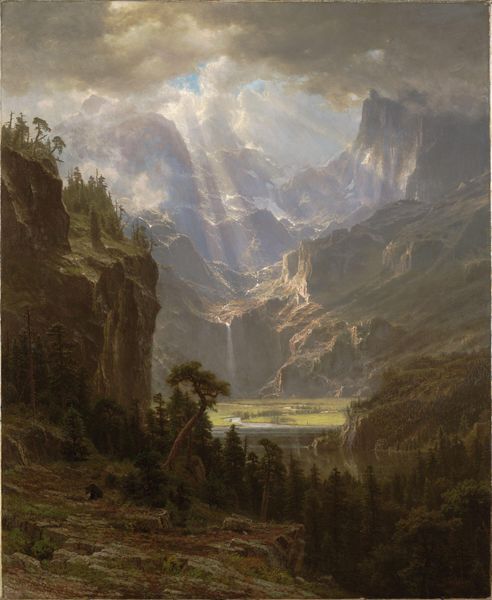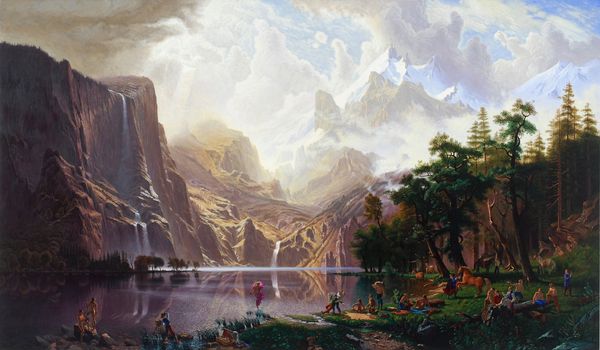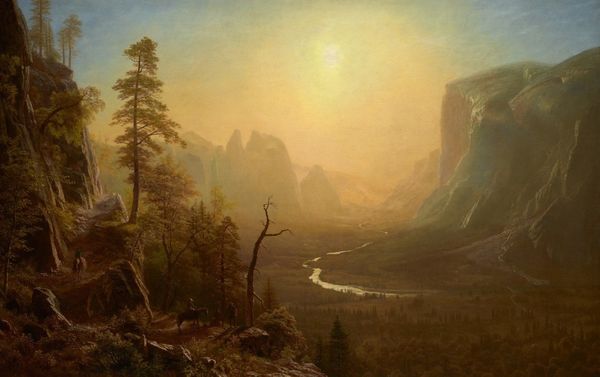
Dimensions: overall: 154.1 × 243.5 cm (60 11/16 × 95 7/8 in.) framed: 214.9 × 302.3 × 21.6 cm (84 5/8 × 119 × 8 1/2 in.)
Copyright: National Gallery of Art: CC0 1.0
Editor: Here we have Albert Bierstadt's "Mount Corcoran," an oil painting from around 1876 or 1877. It's such a grand scene, almost theatrical. I’m really drawn to the way the light plays on the mountain, but also the small detail of the bear on the path! What's your take on this, particularly considering the historical context? Curator: The allure of Bierstadt, especially within the context of Manifest Destiny, is complex. While visually stunning, these paintings often promoted a romanticized view of the American West, subtly encouraging expansion and often erasing Indigenous presence. Consider the term “luminism”—aren't we looking at the very light used to justify westward movement? How does this “empty” landscape feed into colonial narratives? Editor: That's a really interesting point. I hadn't considered the possible political implications of the open landscape. It does feel...empty of people. How does that tie into the artistic movement? Curator: Think about the Hudson River School, which romanticized nature. While celebrating the landscape, their art often glossed over the social realities. It prompts us to ask: Whose vision of America are we seeing? Who benefits from this representation? Bierstadt's masterful technique and the sheer scale served to impress upon viewers a sense of American power and entitlement, subtly bolstering a narrative that pushed aside inconvenient truths about dispossession and environmental exploitation. Do you see any hint of this in his dramatic composition? Editor: Now that you mention it, the composition is very deliberate – like a stage set, almost, creating a spectacle. Maybe that contributes to masking the actual harsh realities of the West at the time. It feels performative, and designed to encourage settlers. Curator: Exactly. Reflecting on it, it's vital that we look at art through multiple lenses. While appreciating its beauty, let’s acknowledge the historical and social forces that shaped its creation and reception. Editor: I agree, viewing this artwork with the implications of westward expansion in mind definitely shifts the whole experience. Thank you for your insight!
Comments
No comments
Be the first to comment and join the conversation on the ultimate creative platform.
